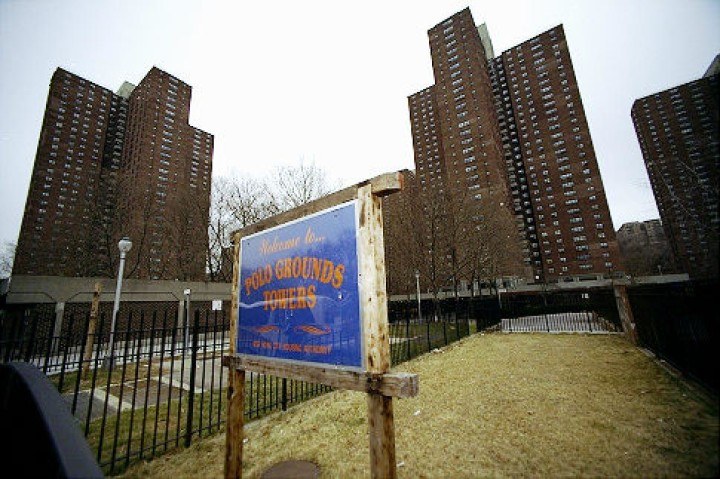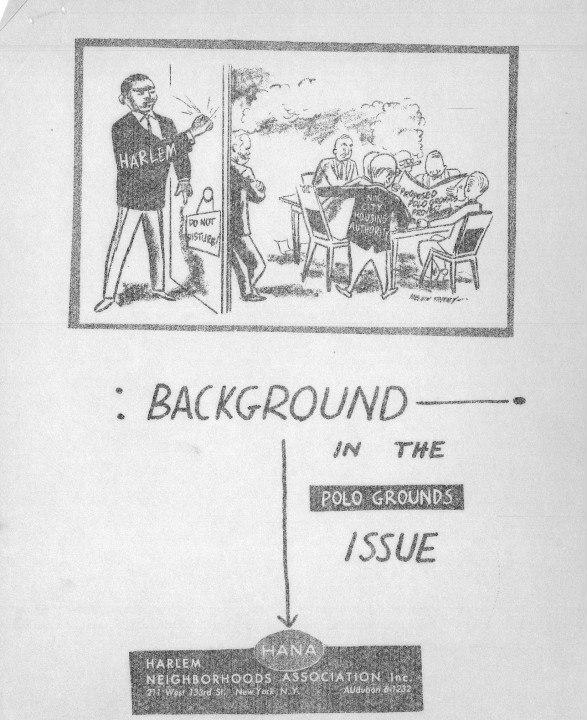
Discrimination and segregation in housing have been the subjects of national conversation in recent weeks. First, the U.S. Supreme Court issued its decision in a fair housing case emanating from Texas. Following that, there was news of a lawsuit against New York City alleging that its practice of setting aside apartments in new subsidized buildings for local residents perpetuates discrimination.
Sadly but unsurprisingly, even a quick search of discrimination or segregation in the CHPC archives yields a trove of historical records, documents, and policy discussions.
One example from the 1960s mimics the dynamics of the Texas v. Inclusive Communities Project case that the Supreme Court recently settled. (One technical but noteworthy difference is the reliance in Texas on the Low Income Housing Tax Credit, the now-ubiquitous tool created in the 1980s and administered by the federal Treasury Department.) After the New York Giants baseball team moved to San Francisco in 1957, its home stadium, the famous Polo Grounds, was set for demolition. In its place were to rise several 30-story public housing buildings.
These redevelopment plans met with swift resistance from local residents. The Harlem Neighborhoods Association (HANA) and the Polo Grounds Community Association (PCGA) quickly began a campaign to rethink the redevelopment. In a letter from June 1964 to the NYCHA chair (below), PGCAs chair listed reasons for going on record in opposing your agencys plan to build a 30-story, 4-building, low-income project on the Polo Grounds site. Included were questions of both race and class the group deemed fundamental to the neighborhood planning effort:
- Why are more low-income houses being built in Harlemespecially a 30-story building, where the City knows it will not be integrated?
- Why is prime land being used for this experimental project?
- What methods are being used in the selection of prospective tenants?”

Please wait while flipbook is loading. For more related info, FAQs and issues please refer to documentation.
Please wait while flipbook is loading. For more related info, FAQs and issues please refer to documentation.
In late 1962, the New York State Committee on Discrimination in Housing (a precursor to the current Division of Human Rights) filed a report with a background discussion and suggestions for the Polo Grounds plan. There is no realistic prospect of achieving any racial integration in this project as planned, begins its discussion titled integration. Touching on nerves that still resonate today, it continues, The transfer of 400 units to middle-income housing would not change the picture in this regard. In fact, there are serious questions regarding the marketability of 400 units of middle-income housing surrounded by 2,000 units of public housing.
The PGCA memo concluded, We also want to go on record as NOT being opposed to low-income projects. However, why must this particular site be used for oneand if such a project is deemed necessary, why not part middle income?
In a letter dated November 19, 1962, Mayor Robert F. Wagner did not express his feelings on the policy matters at hand. Instead, he stated that it is highly doubtful that the Polo Grounds site will be available for any kind of housing until 1964, because the new stadium for the New York Mets (the now-demolished Shea Stadium) would not be ready. He added, We are going to have plenty of time to review the plans for the Polo Grounds housing in the light of other plans we are working on for middle-income housing in the Harlem area, and, in fact, to look at Harlems housing and renewal needs as a whole.
The NYS Committee on Discrimination in Housing memo, written one month later, calls on the mayor specifically to exercise his role under the then-new city charter and quotes his own report calling for an open city of racial and economic integration. The kind of imaginative planning that went into Cadman Plaza and the West Site urban renewal project should be introduced here and a plan developed to use to its fullest all the resources of the areathe parks and institutions, and the river, it suggests.
The Polo Grounds Houses stand today as planned4 towers of 30 stories on a superblock bounded by Frederick Douglass Boulevard, West 155th Street, and Harlem River Driveand house 4,200 New Yorkers. Likewise, contemporary debates (and lawsuits) hinge on the siting and planning of government-subsidized housing, much like the debates around the Polo Grounds in the 1960s.
Please wait while flipbook is loading. For more related info, FAQs and issues please refer to documentation.
